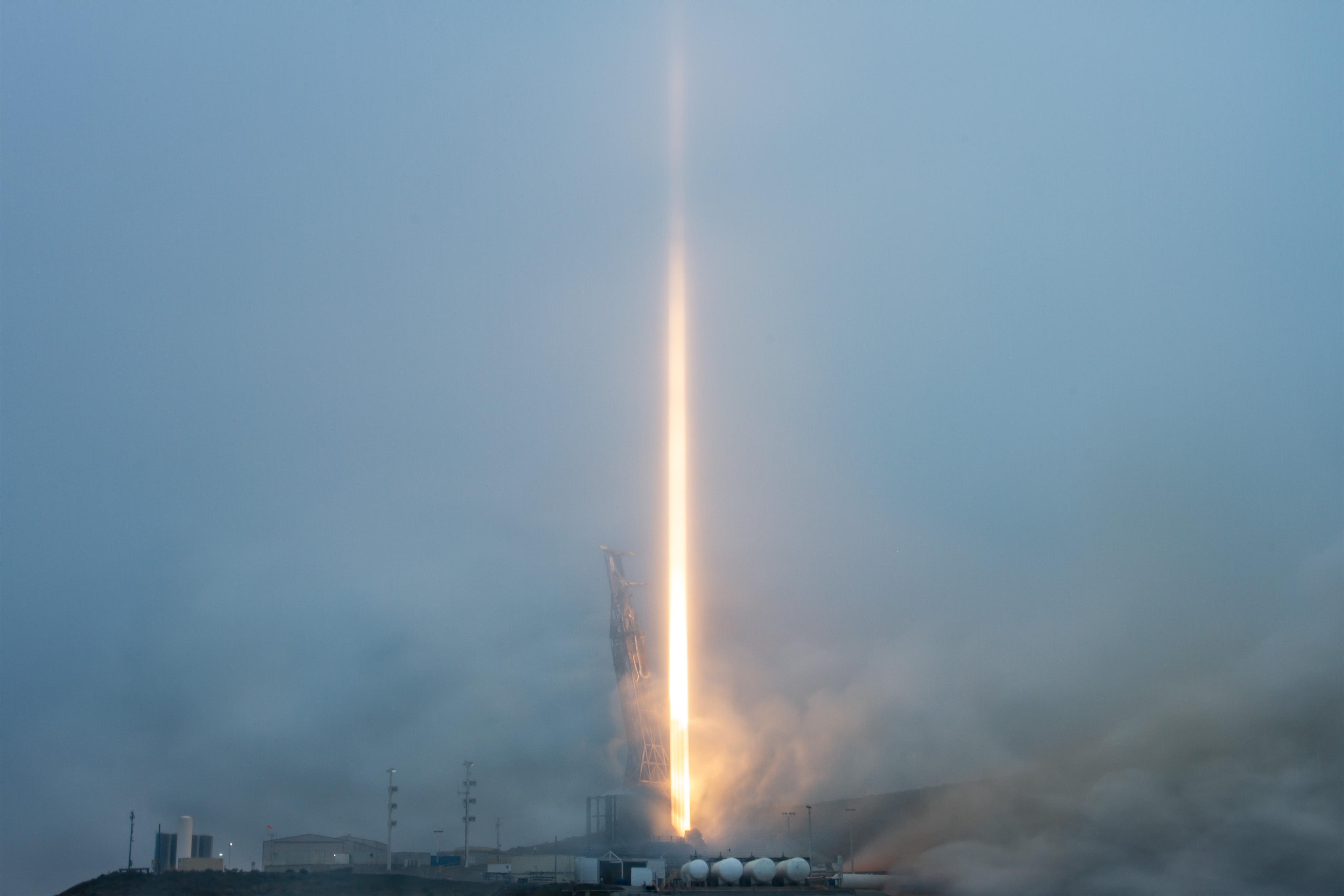VANDENBERG AIR FORCE BASE, CA / ACCESS Newswire / June 24, 2025 / GHGSat, the global leader in emissions-monitoring technology, has successfully launched two new satellites, Pierre (C-12) and Valmay (C-13), aboard SpaceX's Transporter-14 rideshare mission, reaching a total of 14 satellites launched. The satellites deployed from the Falcon 9 rocket approximately 55 minutes after liftoff, marking another milestone in GHGSat's mission of equipping decision-makers with actionable data on methane emissions from around the world.

Photo credit: SpaceX
With this launch, GHGSat now has the unique capability to monitor methane emissions from carbon-intensive industries-such as oil and gas, coal mining, and waste-on a daily basis. This transformative frequency enables near real-time tracking and mitigation, helping companies and governments take faster, better-informed action to reduce emissions.
Operating the world's largest fleet of satellites dedicated to methane, GHGSat provides comprehensive global coverage of methane emissions, surveying more than 4 million sites annually and tracing the source of leaks down to individual pieces of industrial equipment. In 2024 alone, GHGSat detected more than 20,000 emissions over the "super-emitter" threshold of 100 kg/hr. Drawing on unmatched revisit rates and delivering data within hours of a detected emission, GHGSat serves as a trusted partner to industry, government, and financial institutions around the world.
Speed is critical because while methane is over 80 times more potent than CO2 over a 20-year period, it also breaks down in the atmosphere much faster-within about a decade. This means that cutting methane emissions quickly demonstrates benefits for the environment. As international focus sharpens on reducing short-lived greenhouse gases, access to timely, precise, and independent emissions data that pinpoints and quantifies them is foundational for action.
"This launch represents a turning point in our ability to combat methane, one of the fastest levers that the world has to make progress on sustainability targets," said GHGSat CEO Stéphane Germain. "The addition of Pierre and Valmay allows us to deliver a level of global insight and granularity that was unimaginable just a few years ago. Daily monitoring ensures that operators are swiftly alerted of emissions across their assets, enabling rapid mitigation that ultimately drives methane reduction."
The company has a tradition of naming its satellites after the children of GHGSat employees-a tribute to the next generation and a reminder of the driving force behind GHGSat's mission. Pierre and Valmay follow this meaningful tradition, symbolizing both the personal commitment of GHGSat's team and the future these satellites are designed to protect.
Reducing methane emissions isn't just good for the planet-it's also good for business. For the oil and gas sector, methane emissions represent a financial loss: every ton of methane that escapes from oil & gas infrastructure is lost potential revenue. By identifying and fixing leaks rapidly, operators can retain more gas, improve operational efficiency, and reduce regulatory and reputational risks stemming from methane emissions. Studies from organizations such as the International Energy Association have shown that methane mitigation is one of the most cost-effective sustainability actions the industry can take-and can often be done at no net cost to operators.
Moreover, reducing methane emissions bolsters domestic energy security goals. By minimizing losses across production and distribution systems, countries can get more value from their existing energy infrastructure without expanding output. This makes energy supplies more stable and predictable-critical in an era of geopolitical shifts and rising global energy demand. With satellite data, policymakers and energy producers alike can make better-informed decisions that support secure, resilient energy systems.
Now almost a decade since the launch of its first pioneering satellite, Claire, GHGSat continues to rapidly scale its monitoring and data services to meet the surging demand for facility-level emissions data, supporting informed emissions reduction across the public and private sectors worldwide.
About GHGSat
GHGSat is a global technology leader with pioneering emissions-monitoring capabilities that drive industrial efficiency with positive impact. Harnessing the power of satellites and aircraft, GHGSat traces emissions directly to their source at an unmatched speed, delivering the data and insights required to take action. A trusted partner for organizations around the world, GHGSat empowers decision-makers to tackle emissions, accelerating progress towards a resilient energy future.
Contact Information:
Alison Boyer
Director of Communications
aboyer@ghgsat.com
SOURCE: GHGSat
View the original press release on ACCESS Newswire:
https://www.accessnewswire.com/newsroom/en/clean-technology/ghgsat-successfully-launches-two-new-satellites-unlocking-unprecedented-daily-glob-1042413
